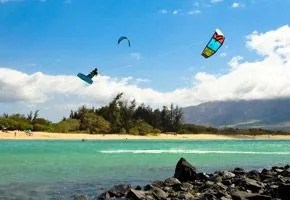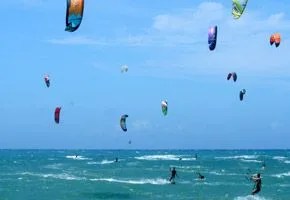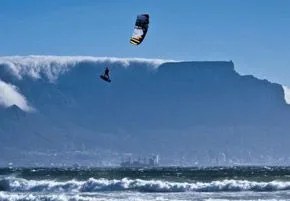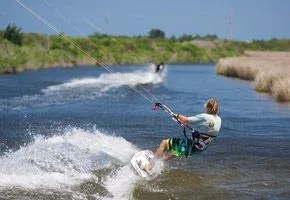Two-time Red Bull King of the Air champion Ruben Lenten says it straight: “The world’s best kiteboarders come to Cape Town every year because the wind and waves are just pumping all the time, and that’s what we need to ride hard and go big.” Off the shores of South Africa’s southern city, swells roll in and calm glassy days are as rare as snow days in Florida. At Big Bay — the Vail of the kiteboarding world — kites paint the sky while spectators on the beach watch the sport’s rising and top talents. Launching off waves, kiteboarders glide a hundred feet in the air, performing mesmerizing acrobatics.
MORE EXTREME SPORTS 5x Kiteboarding Champion Aaron Hadlow | Ultramarathon Running Guide | European Soccer Guide
Sailors rely on wind. Surfers need waves. The best kiteboarders require both. The original concoction of Dominique and Bruno Legaignoux, two young French sailing champions, the first inflatable kite was used to pull a water-skier in the mid-1980s. Their inflatable kites didn’t sink, allowing riders to get back up quickly if they wiped out. Initially the sport didn’t grow roots because no windsurfing company was willing to back the brothers’ idea. Over the next few years, the Legaignouxs improved their design and tested their kites with everything — skateboards, roller skates, kayaks, small boats and windsurfing boards. Today’s patented inflatable kite design is the product of their trials and tribulations.
Parallel to the Legaignoux brothers, in the Pacific Northwest a father and son tandem designed their own prototype during the 1990s. Bill Roeseler, a Boeing aerodynamicist, and his son, Cory, created the “KiteSki”, a kite-towed waterski. Their innovative single ski pushed the sport away from windsurfing, which uses a sail and mast physically attached to the board rather than a separate high-flying kite. But the Americans’ design didn’t propel the sport right away. Not until the late ’90s, when Manu Bertin and professional surfer Laird Hamilton brought kiteboarding to Maui, did the sport gain popularity. Shortly thereafter, the first professional kiteboarding event was held in 1998.
The Kiteboarding Fields
Kiteboarding requires no manmade arena, stadium or colosseum. Nature has everything prebuilt. Here are four of the best spots to fly a kite and ride a board.




